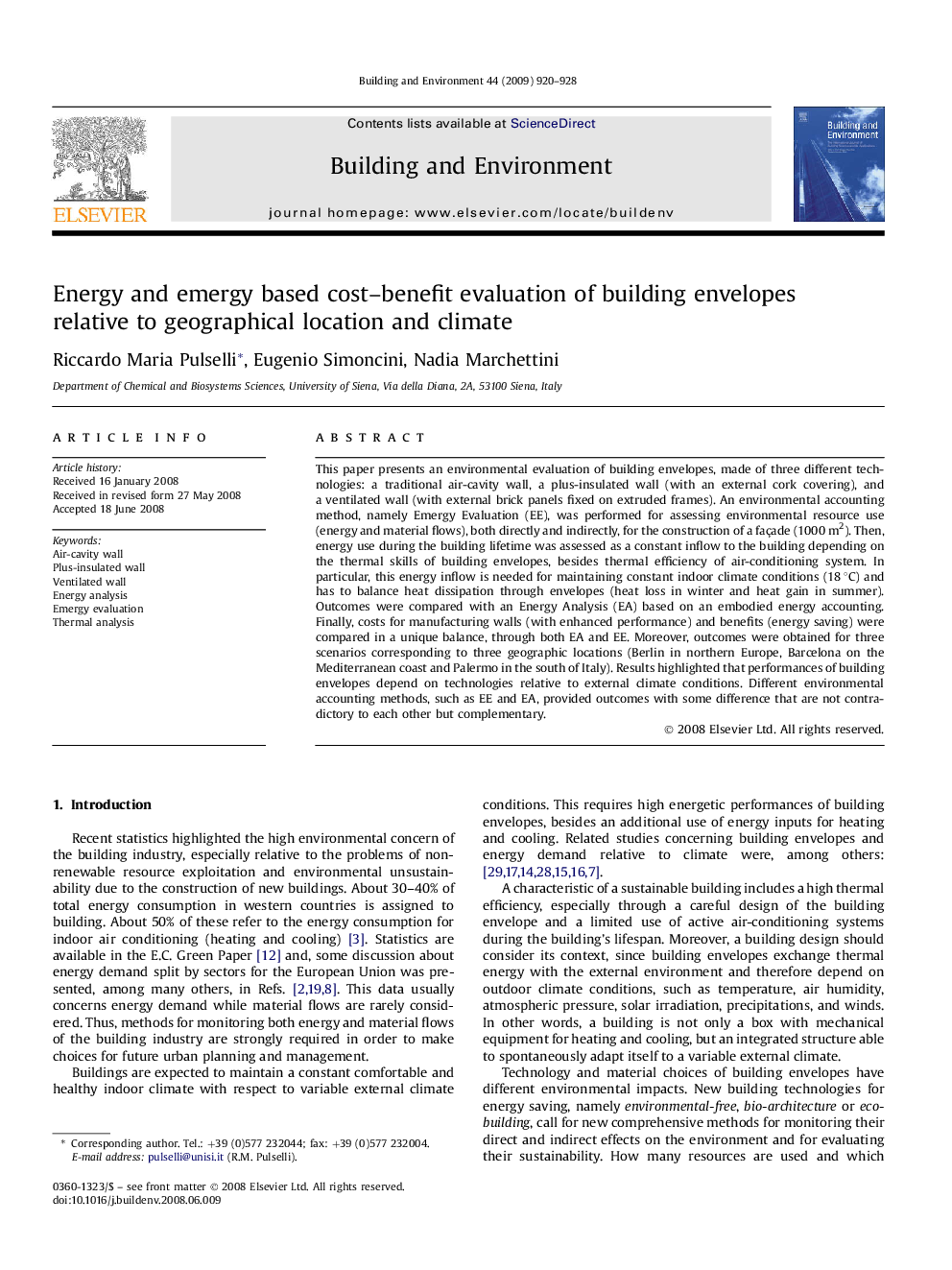| Article ID | Journal | Published Year | Pages | File Type |
|---|---|---|---|---|
| 249481 | Building and Environment | 2009 | 9 Pages |
This paper presents an environmental evaluation of building envelopes, made of three different technologies: a traditional air-cavity wall, a plus-insulated wall (with an external cork covering), and a ventilated wall (with external brick panels fixed on extruded frames). An environmental accounting method, namely Emergy Evaluation (EE), was performed for assessing environmental resource use (energy and material flows), both directly and indirectly, for the construction of a façade (1000 m2). Then, energy use during the building lifetime was assessed as a constant inflow to the building depending on the thermal skills of building envelopes, besides thermal efficiency of air-conditioning system. In particular, this energy inflow is needed for maintaining constant indoor climate conditions (18 °C) and has to balance heat dissipation through envelopes (heat loss in winter and heat gain in summer). Outcomes were compared with an Energy Analysis (EA) based on an embodied energy accounting. Finally, costs for manufacturing walls (with enhanced performance) and benefits (energy saving) were compared in a unique balance, through both EA and EE. Moreover, outcomes were obtained for three scenarios corresponding to three geographic locations (Berlin in northern Europe, Barcelona on the Mediterranean coast and Palermo in the south of Italy). Results highlighted that performances of building envelopes depend on technologies relative to external climate conditions. Different environmental accounting methods, such as EE and EA, provided outcomes with some difference that are not contradictory to each other but complementary.
